Best Mixers For Home Studios 2024
We pick the best options for those looking for affordable studio mixers, including models from 1010 Music, Roland and Allen & Heath.
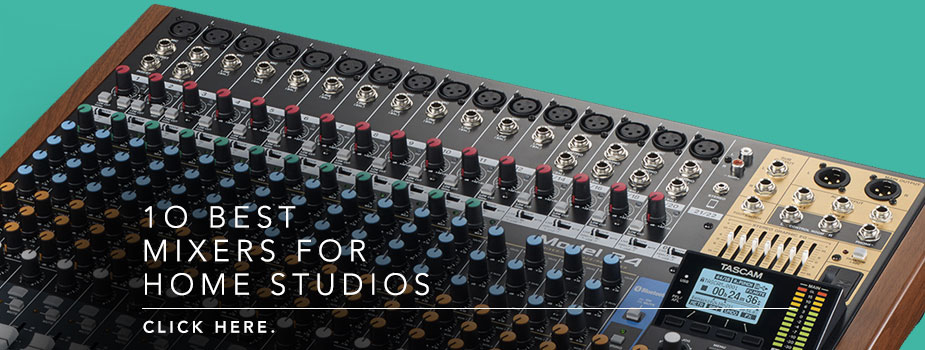
With the growing popularity of hardware setups in dance music production, mixing analogue signals is now a key part of many home studios. The easiest solution is usually a small mixer, providing a hands-on way to sum the outputs of your synths, drum machines and samplers.
Here we run through our favourite options, from ultra-basic models through to fully featured consoles with digital effects, built-in USB interfaces and even multi-track recording.
Note that almost all of the mixers on our list are available in other sizes and channel counts, so if you like the features of a particular model but need more inputs, be sure to check the models higher up the same range.
Contents
What to look for
What kind of mixer?
You might fairly assume that the most important question when choosing a mixer is how many channels you need, but we’d suggest looking at it the other way round. Most mixers come in a range of different channel counts within the same product family, but their features can vary substantially.
The most basic mixers on our list do very little more than sum signals together. You might get basic EQ but that’s about it, the bare-bones approach. There’s nothing at all wrong with simplicity if that’s all you need.
Stepping up a level, you’ll find mixers which also feature built-in effects processing, then mixers with auxiliary sends to allow you to hook up outboard effects. You’ll often find built-in audio interfaces appearing around this level, allowing you to record the stereo mix output or even individual channels to a computer.
At the top of the tree, you’ll find mixers with their own built-in recording features. The more simple models just record the stereo mix, but some can even record multi-tracks, allowing you to edit and process your recordings further down the line.
How many channels?
As we mentioned above, most brands offer their mixers in a range of sizes to suit different requirements, typically starting around four channels and going up to 24, 32 or more.
We’d recommend that you avoid the temptation to go for a high channel count just for the sake of it, despite how easy it is to assume that more channels is better. The sweet spot is to have just enough channels for your regular workflow, so that you’re not spending money on channels that you don’t need. If it comes down to the choice of sacrificing sound quality for more channels, sound quality should be the priority.
The best mixers for home studios
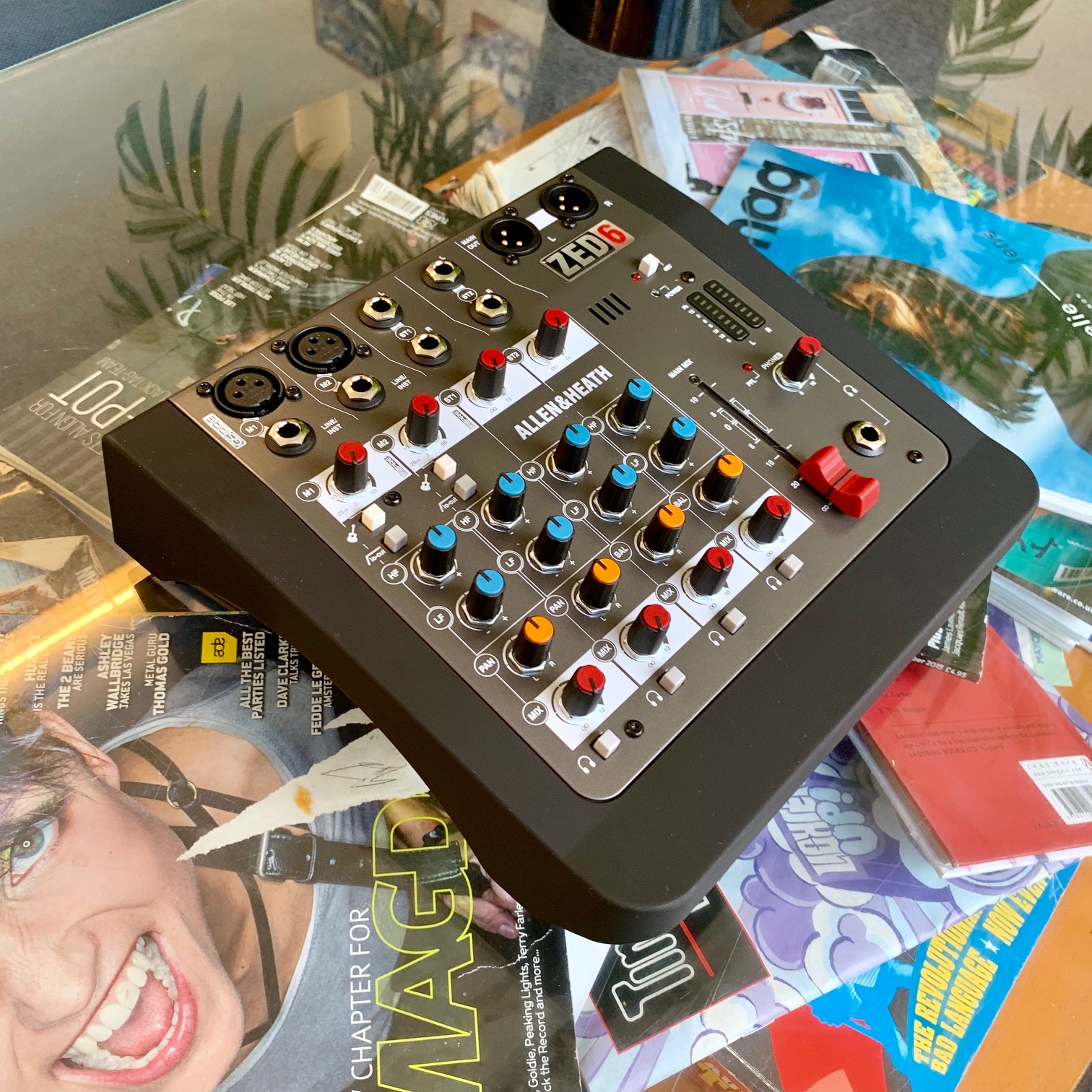
At the most basic level, an audio mixer is a way to combine two or more signals into one. In the case of musical recordings, that almost always means a stereo output these days, with mono mixers largely consigned to history, barring a tiny handful of exceptions. Allen & Heath’s baby Zed6 is about as simple as it gets, with a four-channel design based around two mono line/mic/guitar inputs plus a further two stereo inputs. There’s very basic two-band EQ for adjusting the tone of channels, plus balance controls to pan the sounds left and right.
The Zed6 is a lot more basic than the bigger models in the range (which goes all the way up to a mighty Zed-436), with obvious cost-cutting and space-saving features such as rotary controls for channel level rather than faders. Nevertheless, it’s a good solution for small setups. At this kind of size and simplicity, it really comes down to personal choice whether a mixer gives the best workflow. Mixing signals in the box might make more sense for some people, so we’d also suggest checking out our 10 Best Audio Interfaces list.
More info/Buy| Pros | Cons |
|---|---|
| About as simple as mixers get | No channel faders |
| Handles all types of signal: line level, guitars, microphones and stereo |
| Tech specs | |
|---|---|
| Summing | Analogue |
| Channels | 4 |
| Features | Two-band EQ |
| Dimensions | 249 x 89 x 236 mm |
| Weight | 1270 g |

There’s a bit of a step up in price as we move to higher channel counts, but it’s immediately obvious just how much more capable mixers are at the higher price point. Yamaha’s MG10XU is a good example: nominally a 10-channel design, it’s packed with features that you don’t find on the smaller, cheaper models like the budget Allen & Heath: three-band EQ, 48V phantom power for condenser microphones, audio in and out over USB, more extensive digital effects. Just a glance at the front panel of the MG10XU is enough to see that there’s a lot more going on here, and the end result is a mixer that’s capable of handling medium-sized hardware setups or band recordings with ease.
The only real downside is that the main level controls are still on rotary knobs – as they are with the A&H – rather than the faders that you’d expect to find on bigger mixers. It does make balancing mixes a little less intuitive and tactile, but if you can live with the compromise it does offer a lot for the money, with decent sound quality and plenty of versatility thanks to its effects and bundled Cubase AI recording software.
More info/Buy| Pros | Cons |
|---|---|
| One of the most affordable ‘proper’ mixers on the market | Knobs instead of channel faders |
| Impressive spec for the price point |
| Tech specs | |
|---|---|
| Summing | Analogue |
| Channels | 10 |
| Features | Three-band EQ; USB audio interface |
| Dimensions | 294 x 71 x 244 mm |
| Weight | 2.1 kg |
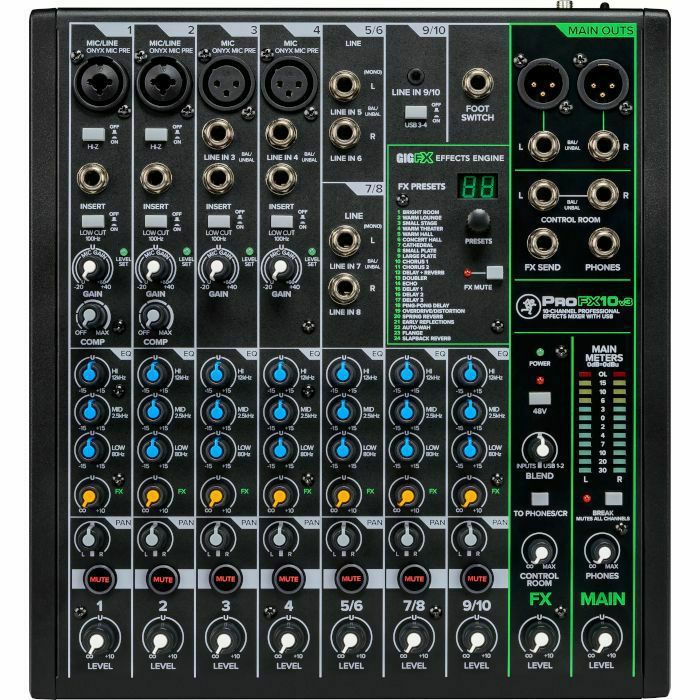
Some of the brands on our list specialise in smaller mixers, while others offer home studio models as part of a much bigger range. Mackie falls into the latter category, having produced full-size studio mixers since the late 80s before launching smaller, more affordable options. The ProFX v3 range is the latest incarnation of the brand’s digital mixer range, intended primarily for live applications but just as effective in the studio.
The 10 represents great value for money, with four mono channels and three stereo. There’s three-band EQ, good quality digital effects and bundled ProTools First and Waveform OEM software to get you started with the mixer’s built-in USB interface. All in all, a very solid package for the money.
You can read our full review of the slightly larger Mackie ProFX 12 v3 here.
More info/Buy| Pros | Cons |
|---|---|
| Suitable for live use or in the studio | Knobs instead of channel faders |
| Bundled software helps you get started with recording |
| Tech specs | |
|---|---|
| Summing | Digital |
| Channels | 10 |
| Features | Three-band EQ; effects; USB audio interface |
| Dimensions | 302 x 272 x 94 mm |
| Weight | 2.2 kg |
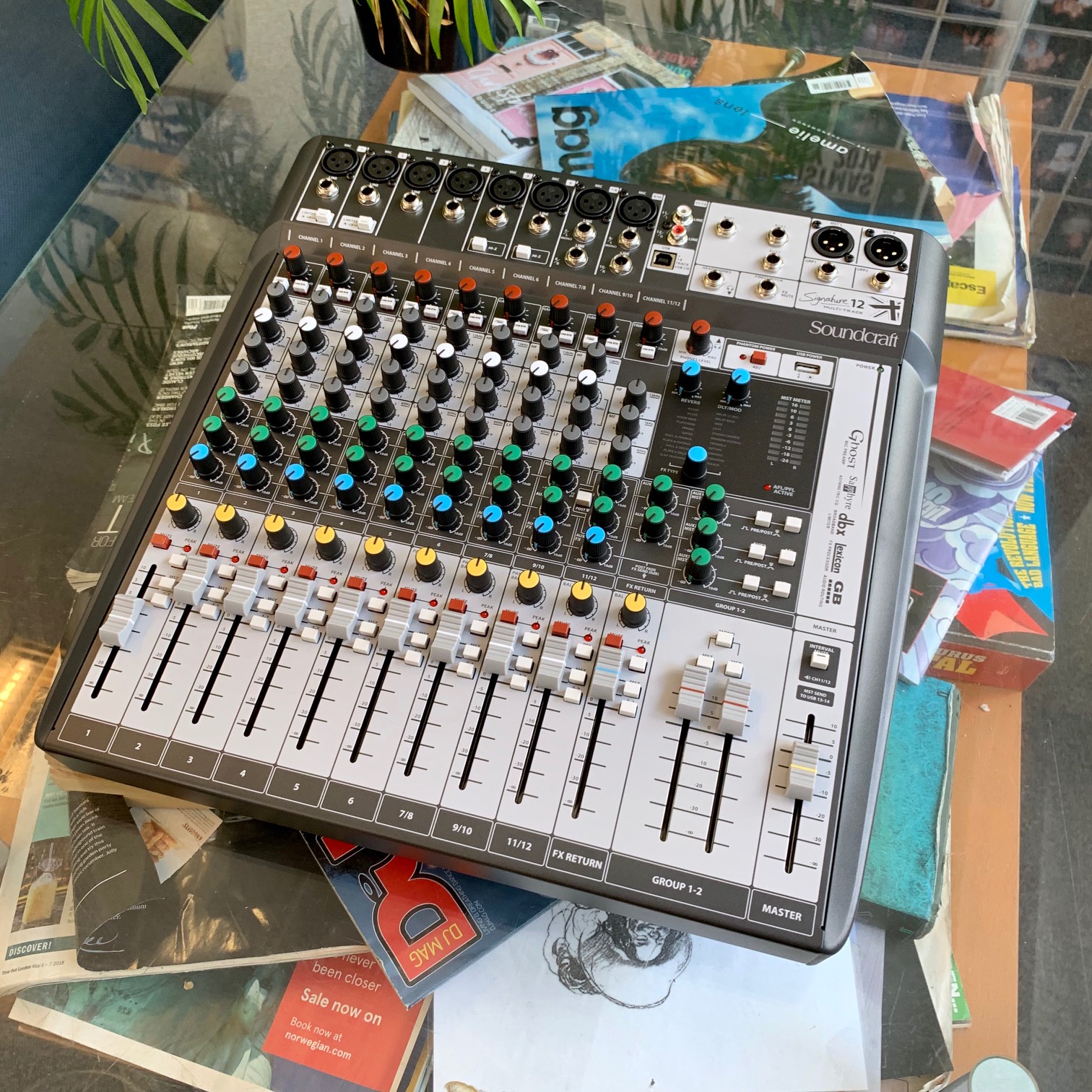
Another British analogue specialist with a history dating back to the 70s, Soundcraft bears a lot of similarities to Midas. The Signature 12 MTK is a rough equivalent of the DM16, but there are a few notable differences that justify the step up in price.
The big selling point here is that the Signature 12 MTK is a kind of hybrid mixer, with an analogue heart complemented by digital features. So, in addition to the 12 channels (eight mono plus two stereo) with three-band semi-parametric EQ you’ll also find digital effects and a built-in USB interface. It’s a ‘best of both worlds’ scenario, combining the quality analogue summing Soundcraft are known for with the convenience and versatility of digital features.
More info/Buy| Pros | Cons |
|---|---|
| Analogue and digital features combine | Large scale format not as portable if you want to take a mixer out for live use |
| Precise semi-parametric EQ |
| Tech specs | |
|---|---|
| Summing | Analogue |
| Channels | 12 |
| Features | Three-band semi-parametric EQ; effects; USB audio interface |
| Dimensions | 388 x 113 x 380 mm |
| Weight | 5860 g |

Roland’s Aira MX1 is probably the most unusual mixer on our list, offering quite a different approach to the more conventional brands. Roland have made a few mixers over the years, mostly under their Boss sub-brand, but the MX-1 takes the most specialist approach, aimed specifically at users of the brand’s Aira and Boutique ranges of synths, drum machines and effects. The MX-1 links up nicely to other Roland equipment, allowing the mixer to act as a central hub and sync effects with sequencers on other gear, but it also offers a range of analogue and digital inputs allowing you to connect any other equipment you have.
Assuming you own at least one or two bits of Roland gear, the MX-1 is well worth a look; it’s a unique approach that really does bring the best out of the Aira and Boutique instruments. A very clever solution.
More info/Buy| Pros | Cons |
|---|---|
| A clever solution for mixing and performing with Roland Aira and Boutique instruments | At its best when combined with other Roland hardware, so may not work for everyone |
| Good compact size for portability |
| Tech specs | |
|---|---|
| Summing | Digital |
| Channels | 11 |
| Features | Step-sequenced effects; tone/filter/EQ; USB audio interface |
| Dimensions | 400 x 65 x 264 mm |
| Weight | 1810 g |

Most mixers stick to a pretty safe formula, but the 1010 Music Bluebox tears up the rule book. It’s a digital mixer in a tiny format, with a touchscreen handling most of the control duties. The Bluebox can mix up to 12 mono signals (or six stereo) via 3.5 mm inputs, with all of the basic features you’d expect from a much bigger mixer: 4-band parametric EQ per channel, pan controls, effects sends and built-in compression, reverb and delay. It’s ideal for any cramped studio, but its tiny format also makes it ideal for taking out for live performances, making it a convenient solution for anyone who drags their studio setup out on the road.
The surprising thing about the Bluebox is that it feels like a creative tool more than a functional object; the quick and intuitive workflow makes it easy to set up effects and routings, while the built-in multi-track recording and overdubbing options help it feel like a halfway house between a mixer and a full-blown DAW. In a live setting, you can use it to play backing tracks while mixing new instruments in real time, allowing you to manipulate and take control of your performances. It’s great value for a unique mixing and recording solution which packs a lot of power into what must surely be one of the most compact 12-channel mixers you’ll find anywhere.
More info/Buy| Pros | Cons |
|---|---|
| Compact and powerful digital mixer | Some will prefer physical controls to the Bluebox’s touchscreen |
| Nice recording features |
| Tech specs | |
|---|---|
| Summing | Digital |
| Channels | 12 |
| Features | Multi-track recording; effects; MIDI (for tempo-synced effects) |
| Dimensions | 140 x 130 x 50 mm |
| Weight | 450 g |
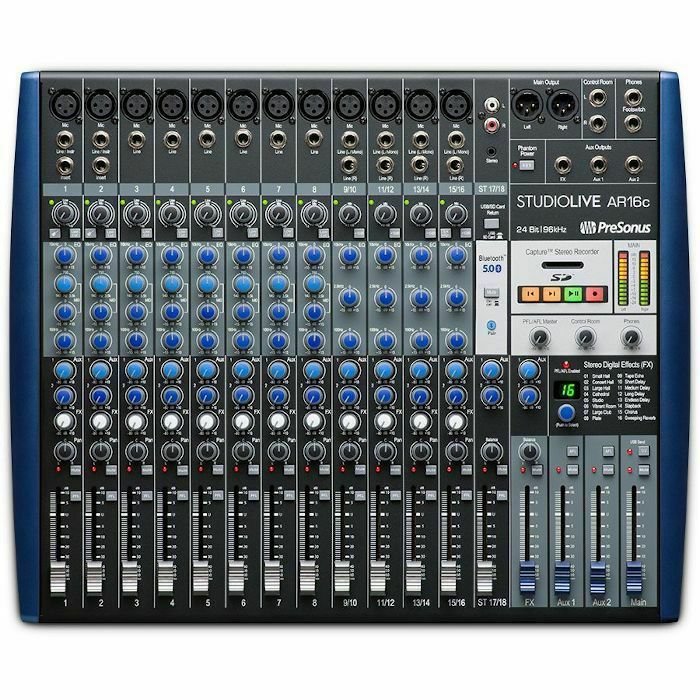
Falling somewhere between a live mixer and a recording console, the StudioLive series from PreSonus represents an interesting middle ground. The built-in SD card slot allows you to record directly to a stereo file, making this a good choice for anyone who jams their tracks live in real time, without the need to go back and edit later. However, if you need the added versatility of multi-track recording the mixer also functions as an 18×4 audio interface, allowing you to record to the bundled Studio One software (or any other DAW of your choice).
With eight mono channels plus four stereo there are plenty of inputs to play with, all mixed in analogue before hitting the digital converters if required. A real multi-purpose mixer that allows you to work in whichever way suits you best.
More info/Buy| Pros | Cons |
|---|---|
| Good all-rounder for studio recording purposes or live use | Mixers of this size are never cheap |
| Built-in 18×4 interface for multi-track recording or SD card slot for recording stereo mixes |
| Tech specs | |
|---|---|
| Summing | Digital |
| Channels | 18 |
| Features | Three-band analogue EQ; USB audio interface; stereo SD recorders; effects |
| Dimensions | 480 x 89 x 397 mm |
| Weight | 6.4 kg |
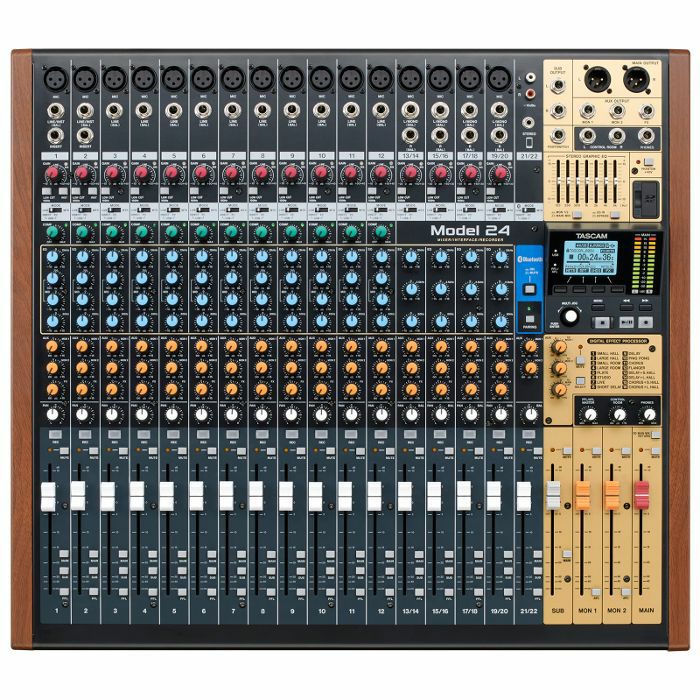
Our final selection represents something a little different to the norm. Tascam’s greatest contribution to home recording was the iconic PortaStudio range of cassette-based multi-track recorders, which made it cheaper and easier for musicians to record their work. The Model 24 is the spiritual successor to that idea: it’s an analogue mixer first and foremost, but it also includes a digital multi-track recorder, making it an all-in-one solution for home studios.
Even as a mixer alone, the Model 24 is impressive, with a huge channel count, 100mm long-throw faders and versatile routing. Add the ability to record and process everything in a single box and you’ve got a versatile, user-friendly solution without the need for a computer.
More info/Buy| Pros | Cons |
|---|---|
| The spirit of the PortaStudio lives on in a new concept | Definitely not portable like the old-school PortaStudios |
| Analogue mixer meets digital multi-track recording |
| Tech specs | |
|---|---|
| Summing | Analogue |
| Channels | 22 |
| Features | Three-band semi-parametric EQ; multi-track recording; USB audio interface |
| Dimensions | 576 x 513 x 112 mm |
| Weight | 10 kg |
In summary
The biggest factor to decide when choosing a mixer is how many channels you need to sum together, but there’s more to mixers than that. In our list we have everything from giant mixers all the way down to portable options which could also serve well in a live setting.
What makes things a little more complicated is the way different manufacturers add extra features; it’s actually quite hard to find a mixer which only mixes signals together these days. Instead, you’ll often find effects at a bare minimum, and quite likely some kind of audio interface features. The fancier models on the market now include built-in recording devices, allowing you to record your stereo mix or multi-tracks directly to the mixer itself.
Individual needs will vary hugely, but there’s something to suit everyone here.